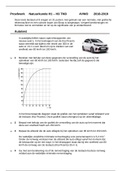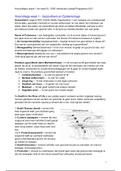Summary
Summary AQA English Language - Child Language Acquisition Linguist Notes
- Module
- Child Language Acquisition
- Institution
- AQA
This is an excellent summary of a wide range of linguist theories and research which was all I used when revising for my final exam. I shared it with my friends who found it succinct yet detailed, providing all the information needed for the Child Language Development section of the AQA English Lan...
[Show more]








